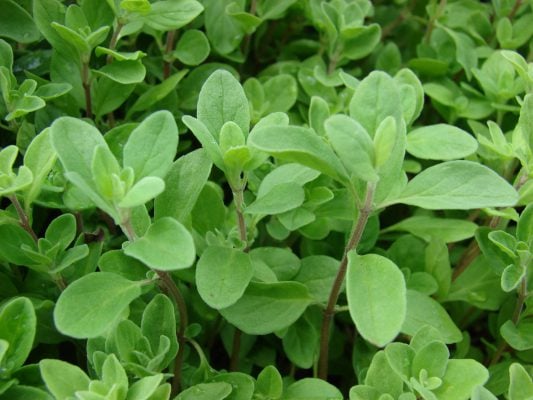
Learning Download: How to Grow Marjoram
From Seed to Harvest: A beginner’s guide to growing marjoram
Marjoram has three different types — sweet, pot marjoram and wild marjoram, which is also known as oregano. Marjoram is easy to grow and grows well in containers as longs as the containers are at least 6 inches wide and have a drainage hole at the bottom. Marjoram can be used in many different culinary dishes such as salads and mixed in with vegetables. It can be used for herb butters and vinaigrettes and is also grown for its fragrant scent. Although marjoram is actually a perineal, it is usually grown as an annual due to its tenderness in cold weather. Marjoram also attracts pollinators such as bees and butterflies to the garden.
To plant:
Marjoram should be planted outdoors when there is no longer any threat of frost, but it is a slow-growing plant so seeds should be started indoors first. Begin seeds indoors as early as February. Distribute seeds evenly on the surface of wet soil but do not bury them. When transplanting seedlings outside, plant them at least 12 inches apart. Marjoram can grow up to 2 to 3 feet wide.
To grow:
Marjoram grows best in containers and should be placed in full sun i well-drained soil with a pH of 6.7 to 7.0. Like most herbs, it also can be grown indoors on a windowsill. Sweet marjoram can reach 2 feet tall. Trimming the plants when buds appear and before the buds flower encourages more foliage growth. In addition to encouraging more leaf growth, pruning also helps shape the plant. Begin pruning when the plant is 6 inches tall and prune it to develop a bushy shape. Marjoram is good at repelling cabbage moths from the garden and can be planted in between rows of Brassica plants to prevent moths from ruining them. Marjoram also grows well if planted near asparagus and basil.
Marjoram may repel pests, but it can fall victim to some diseases such as downy mildew, especially if grown in humid and moist conditions.
To harvest:
Marjoram is ready to harvest just before its flowers are open, generally six weeks after planting and once it is at least 3 feet tall. If marjoram is harvested when its blooms are fully open, there is a bitter taste. Never harvest more than a third of marjoram’s leaves at a time. After harvesting the marjoram, bundle the cuttings and hang them upside down to dry use as dried herbs.
What marjoram craves:
Marjoram doesn’t require much fertilizer, but upon transplanting the herb to the garden, a granular plant food can be added to the soil. A slow-release fertilizer can be added to soil prior to planting or compost can be added to the soil as well.
Where to buy marjoram seeds:
You can find marjoram seeds that produce sweet edible flowers at Urban Farmer.

